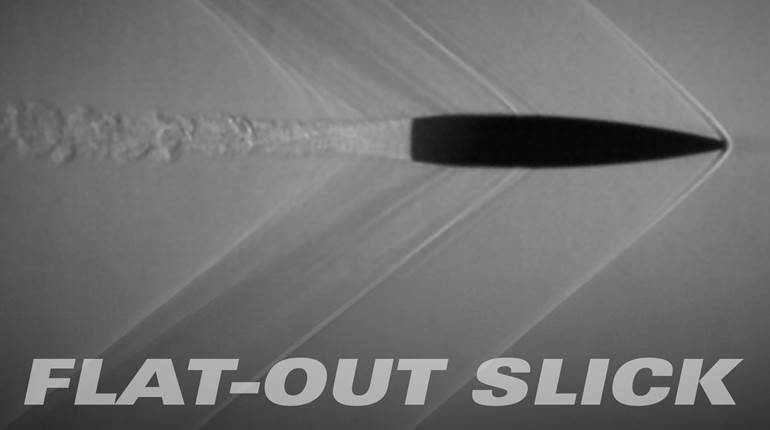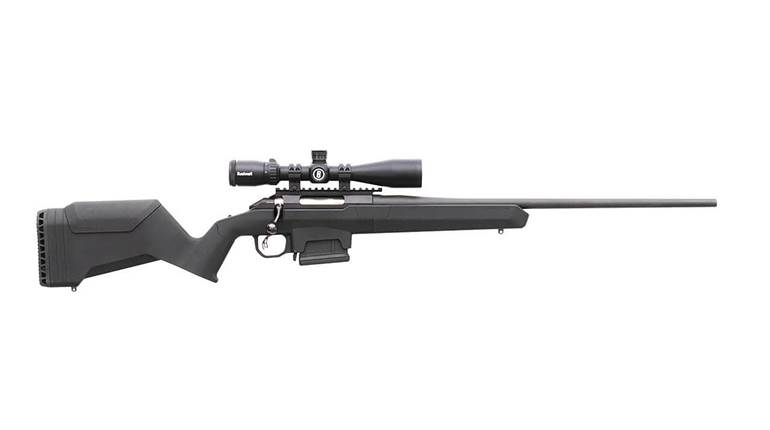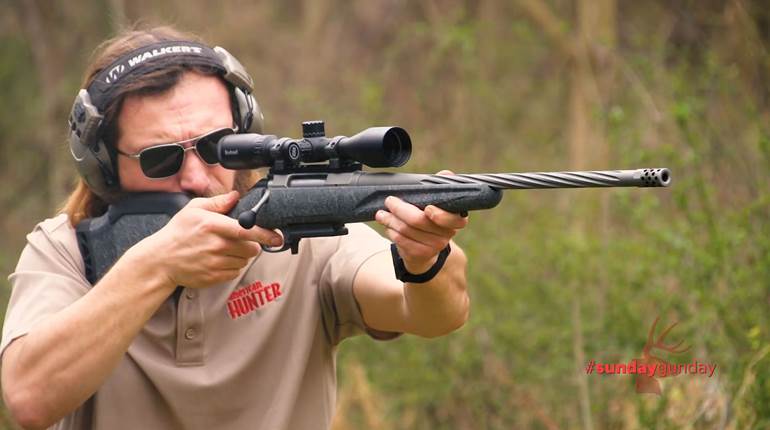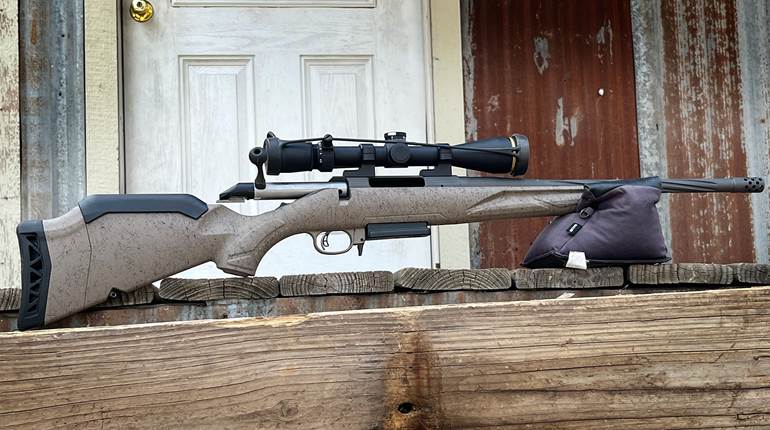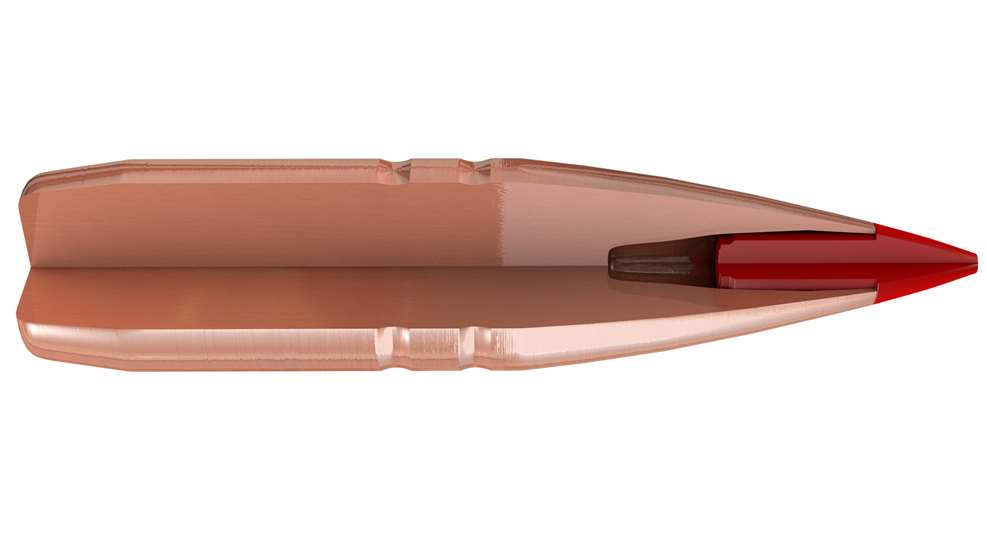
The majority of Hornady employees are dedicated hunters, and it follows that they would use their company’s products in these pursuits. More specifically, though, a water-cooler poll revealed that quite a few of them hunted with Hornady’s GMX bullets made with a solid shank of gilding metal and a hollow point capped with a polymer tip. The GMX provided great terminal performance on game from antelope to moose, yet the bullet’s effective range was relatively limited because it required an impact velocity of 2,000 f.p.s. or more to open the nose and expand to 1.5 times its bullet diameter.
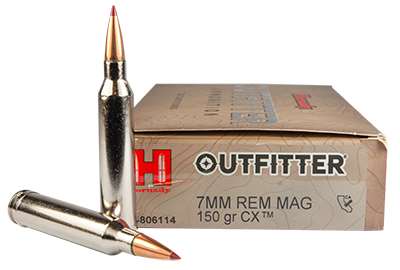
Hornady engineers set out to increase the GMX’s ballistic coefficient (BC) to extend the useful reach of the bullet. The result was the CX bullet (Copper alloy eXpanding). The CX was one of the final engineering projects Seth Swerczek worked on before moving to his current job as Hornady’s marketing communications manager. “We asked a lot of questions about the GMX, such as why are the grooves in the GMX cut with a square bottom and edges?” Swerczek said. “The answer was the cutters were shaped like that—and that wasn’t a very good answer.”
Those sharp edges created shock waves during a bullet’s flight and seriously degraded its BC.
Lots of shooting commenced to determine the best shape for the grooves on CX bullets to reduce drag. The resulting smoothed edges maximized aerodynamics for the CX to retain more velocity downrange. The CX adds about 100 to 200 yards to its terminal effective range compared to old GMXs of the same caliber and weight.
A look at the stated BCs of CX and GMX bullets shows that GMX bullets have a slightly higher BC, but Swerczek said it isn’t that simple. Back in 2009, when the GMX bullets were introduced, Hornady set up chronographs to record velocity at 100 and 200 yards and used those numbers to calculate a bullet’s BC. “We used Doppler radar to record velocities all the way out to 2,000 yards. That much more exactly determined the BC of CX bullets,” he said. “And I can assure you, the BCs of CX bullets are higher.”
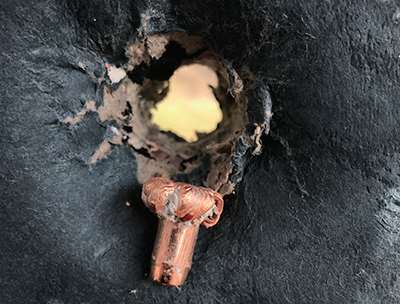
During those shooting trials, Hornady engineers noticed that a regular polymer tip was melting during flight, degrading velocity. Switching to a Heat Shield Tip, like those used in Hornady’s ELD line of bullets, helped resist aerodynamic heating and provided a consistent BC throughout the bullet’s entire flight.
CX bullets are made of copper with about 5 percent added zinc. Such a solid metal bullet has a much higher engraving force from rifling lands than a bullet with a thin jacket and lead core. The narrower-than-bore-diameter grooves on CX bullets reduce bearing surface to lower that pressure and also provide a place to deposit metal displaced as the rifling lands engrave the bullet. I measured the crimping cannelure on a 180-grain, .30-cal. CX bullet at 0.294" in diameter and the pressure relief groove below at 0.293" in diameter. A fired and recovered 165-grain, .30-cal. CX bullet showed a slight amount of material engraved from rifling lands had collected in the two relief grooves. If two relief grooves are good, wouldn’t additional grooves reduce pressure even further? “We found two grooves were plenty,” Swerczek said. “Remember, each additional groove increases drag.”
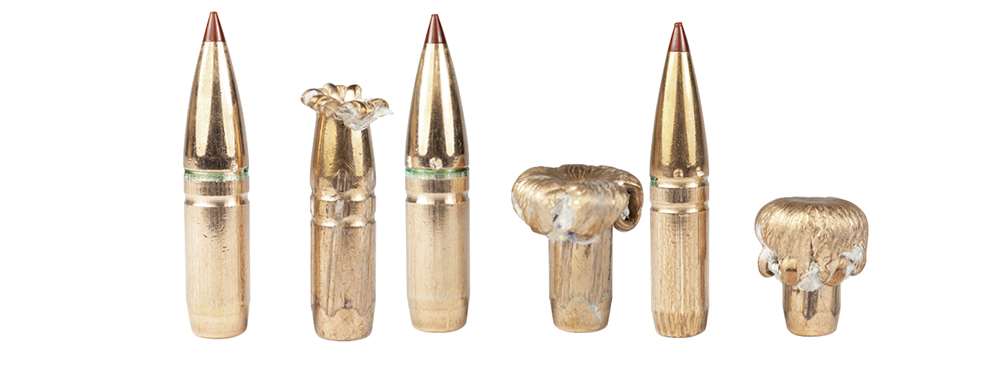
The front groove on CX bullets is also intended as a cannelure for crimping the case mouth. Hornady engineers positioned the cannelure by first determining which existing cartridges would most likely be loaded with a particular bullet. For instance, a 165-grain, .30-cal. CX will most likely be loaded in the .308 Win., .30-’06 Sprg. and .300 Win. Mag. cartridges. Some weights of CX bullets are on the heavy side, such as the 130-grain, .26-cal. and 190-grain, .308-cal. bullets. “These bullets are mainly intended for newer cartridges, like our .300 PRC, with the bullet head seated farther out of the case,” Swerczek said.
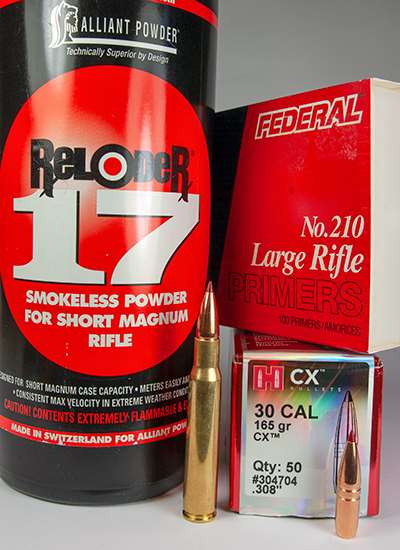
Hornady offers 16 CX bullets for handloading, from an 80-grain .24-cal. to a 130-grain .27-cal. and a 250-grain .375-cal. For the .30-’06 Sprg., I assembled handloads with 165-grain CX bullets. “CX bullets seem to shoot best with some jump to contact the rifling lands,” Swerczek said, adding, “Seated about 0.005" from the rifling is a good place to start.” A cartridge length of 3.240" placed the CX bullets that distance from the start of my Ruger .30-’06’s rifling lands.
Swerczek said that handloading data for GMX bullets can also be used with CX projectiles. The Hornady website also contains CX load data for some new cartridges, including the 6.5 mm PRC. Single-metal bullets, like the CX, are long for their weight and, seated in a case, take up quite a bit of propellant space. To compensate, I started load development with IMR 4350 and 4166 and Reloder 17. Reloder 17 showed the best accuracy promise; to up the velocity some, I increased the charge weight to 57.0 grains, which is still 2.0 grains below the maximum shown in the Hornady Handbook of Cartridge Reloading 10th edition. Average velocity increased to 2,844 f.p.s. as a result, and five groups averaged 1.13".
The higher the impact velocity, the better CX bullets expand. “If you can get the extra speed,” Swerczek said. I’d definitely go with the lighter CX bullet for its longer effective range. For example, the 165-grain, .30-cal. CX bullets fired at 2,844 f.p.s. from my Ruger .30-’06 slow to about 2,000 f.p.s. at 400 yards. In comparison, the heavier 180-grain CX bullets fired from the muzzle of the Ruger at 2,600 f.p.s. slow to 2,000 f.p.s. at 300 yards.
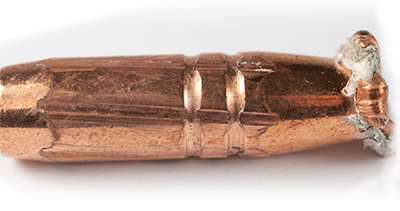
CX bullets are loaded in two of Hornady’s rifle ammunition lines. Five cartridges are loaded in the Superformance line, from the .223 Rem. with a 55-grain CX to the .270 Win. with 130-grain CX bullets. The Outfitter series includes 15 loads, from .243 Win. firing 80-grain CX bullets to .338 Win. Mag. loaded with 225-grain CX bullets.
I shot Outfitter cartridges and handloaded CX bullets from two hunting rifles. My Ruger American Standard rifle chambered in .30-’06 Sprg. is fairly new and has been on quite a few hunts—mostly for elk because of its light weight. My Remington Model 700 Classic, chambered in 7 mm Rem. Mag., has been a dependable hunting partner for decades on game from antelope to elk.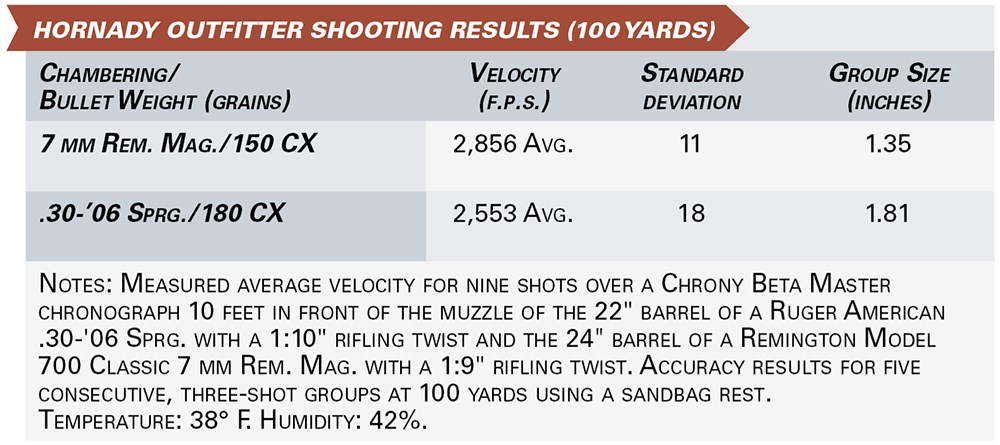
The Remington fired Outfitter factory loads pretty accurately, with five three-shot groups averaging 1.35" at 100 yards. Hornady states a muzzle velocity of 3,000 f.p.s.; the speed of 150-grain CX bullets averaged 2,856 f.p.s. over nine shots from the rifle’s 24" barrel with a standard deviation of 11 f.p.s.
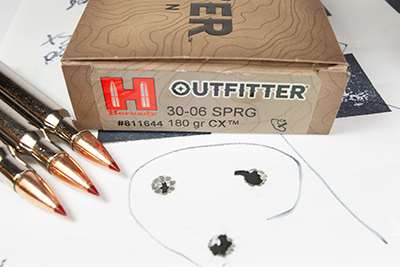
The Ruger American shot Outfitter 180-grain CX bullets with adequate accuracy and only about 50 f.p.s. short of the 2,600 f.p.s. muzzle velocity stated by Hornady.
The terminal performance of CX should remain the same as with the old GMX bullets. Because of their solid shank, there is no concern about CX bullets shedding much weight, no matter the impact speed.
I’ve been fortunate over the years to take pronghorn antelope, whitetail, black bear and elk with a .308 rifle, shooting mostly 165-grain GMX bullets. The closest shot was 30 yards; the GMX punched through the base of the neck of a large black bear stalking me because I smelled like the bait barrel. The farthest was somewhat more than 200 yards at a six-point bull elk wild in the rut; the bullet punched through the bull’s lungs and lodged under the hide on the far side, perfectly expanded. That’s enough proof for me that CX bullets will perform well on game, but in lieu of an actual hunt, I shot some CX bullets into stacks of water-soaked books. With an impact velocity of about 2,800 f.p.s., 150-grain 7 mm CX bullets expanded to 0.560" in diameter and penetrated 12" into the paper. The recovered bullet weighed 149 grains. A 180-grain CX bullet fired from a .30-’06 hit the papers at about 2,500 f.p.s. to plow through 11" of paper, expanding to 0.636" and weighing 175.5 grains. Somewhere along its path, the bullet had expanded to more than an inch in diameter before its petals had folded down along its shank.
Hornady suggests a striking velocity of at least 2,000 f.p.s. as the minimum for CX bullets to expand to 1.5 times its bullet diameter. To test this, I handloaded 165-grain CX bullets fired from the .30-’06 to hit the papers at a velocity of 1,800 f.p.s. The bullet penciled a hole through the paper 11" deep and came to rest with only the loss of its Heat Shield tip. The bullet nose had only opened to 0.375", not much more than the bullet diameter.
With the modifications made to the GMX to create the CX, Hornady has retained the good terminal performance of the GMX and extended it by a couple hundred yards. My guess is that there will be some bragging around the Hornady office water cooler after this coming hunting season.












